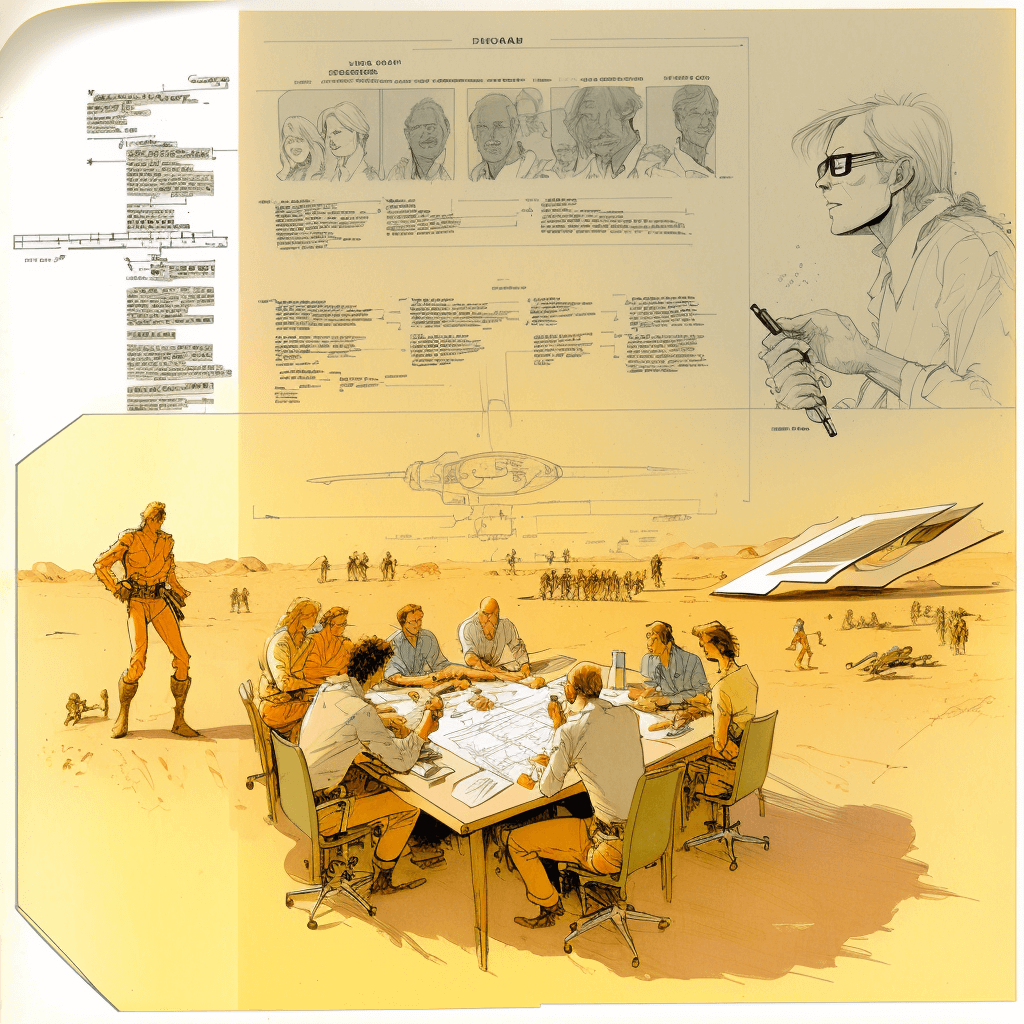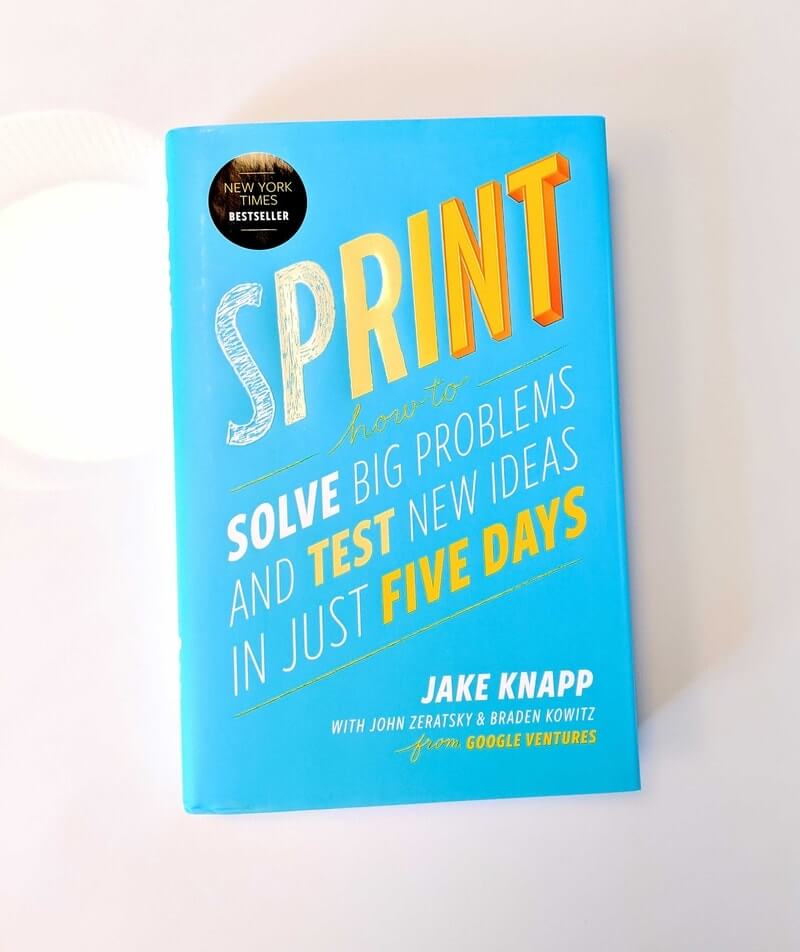Learn how to use the design sprint process to tackle your toughest challenges and drive innovation in your organization
Are you tired of endless meetings and slow decision-making processes that leave you feeling stuck and unproductive? "The Sprint Book" by Jake Knapp, John Zeratsky, and Braden Kowitz offers a fresh approach to solving complex problems and making better decisions through the design sprint process.

Based on the author's experience at Google Ventures, "The Sprint Book" outlines a step-by-step process for using design sprints to tackle your most significant challenges and drive innovation in your organization. A design sprint is a five-day process for answering critical business questions through design, prototyping and testing ideas with customers.
The design sprint process is a highly effective way to solve complex problems and push invention. It allows you to compress weeks or even months of work into a single week, giving you a clear path forward and reducing the risk of building something that no one wants. Additionally, the sprint process encourages collaboration and cross-functional thinking, as it brings together a diverse team of stakeholders to work towards a common goal.

Sprint Week
But how do you conduct a design sprint? In "The Sprint Book," the authors provide a detailed guide to each step of the process, including:
Setting a Clear Goal
You are setting a clear, measurable goal for your sprint. The purpose should be specific, achievable, and aligned with your larger business objectives. It's essential to have a clear understanding of what you want to achieve through the sprint process so that you can stay focused and on track.
Generating and Prioritizing Ideas
Gather and prioritize ideas through brainstorming and voting. This step involves bringing together a diverse team of stakeholders to generate and assess arguments for solving the problem. The authors recommend using various brainstorming techniques, such as sketching and role-playing, to encourage creative thinking and stimulate new ideas. Once you have a list of ideas, you can use voting to prioritize the ones with the most potential.
Creating a Prototype
Create a high-fidelity prototype in just one day. The prototype should be realistic enough to test with users, but it doesn't have to be perfect. The goal is to create something you can use to gather feedback and validate your assumptions. In "The Sprint Book," the authors provide a detailed guide to creating practical prototypes, including tips on what to include and what to leave out.
Testing and Gathering Feedback
Test your prototype with real users to gather valuable feedback. This step is critical to the success of the design sprint process. By testing your prototype with real users, you can gather valuable insights into what works and what doesn't and identify areas for improvement. The authors guide how to select and prepare users for testing and how to conduct the tests and analyze the results.
incorporating Feedback and Improving the Prototype
Analyze and incorporate feedback to improve your prototype. After testing your prototype with users, it's crucial to analyze the feedback you received and use it to make improvements. In "The Sprint Book," the authors provide strategies for incorporating feedback and iterating on your prototype to create a final product that meets the needs of your users.
The book also includes case studies and practical tips from organizations that have successfully used the design sprint process to drive innovation and solve complex problems. These examples provide valuable insights into how the design sprint method can be applied in different contexts and help you avoid common pitfalls.
But the value of "The Sprint Book" goes beyond just the design sprint processes. It also explores the larger context in which design sprint can be used, including how to integrate them into your organization's culture and measure their success. The authors provide insight into common pitfalls to avoid and strategies for overcoming them.

Design Sprint Book for Your Organization's Library
Integrating design sprint into your organization's culture can be challenging, but it's worth the effort. Design sprint provide a structured framework for solving problems and driving innovation. They can be an effective way to get buy-in from stakeholders and build momentum around new ideas. In "The Sprint Book," the authors discuss overcoming common barriers to adoption and creating a culture of continuous improvement through design sprint.
Measuring the success of design workshops is also essential. By tracking key metrics, such as customer satisfaction and business impact, you can determine whether your workshops are delivering value and identify areas for improvement. In "The Sprint Book," the authors guide how to set up a system for tracking and measuring the success of your design sprints, as well as how to communicate the results to stakeholders.

If you're looking for a comprehensive guide to solving complex problems and making better decisions, "The Sprint Book" is a must-read. Its step-by-step approach and focus on collaboration, customer feedback, and long-term success make it a valuable resource for any team looking to drive innovation and achieve results.
Whether you're a startup founder, product manager, or simply looking for a more effective way to tackle your most demanding challenges, "The Sprint Book" is worth a read. Its practical advice and real-world examples will give you the tools and confidence you need to implement the design sprint method in your organization successfully.
"The Sprint Book" is a comprehensive guide to solving complex problems and making better decisions using design sprints. Its step-by-step process, focus on collaboration, customer feedback, and long-term success make it a valuable resource for any team looking to drive innovation and achieve results. Whether you're a startup founder, product manager, or simply looking for a more effective way to tackle your most demanding challenges, "The Sprint Book" is worth a read.

Its practical advice and real-world examples will give you the tools and confidence you need to implement the Google design sprint method in your organization successfully. With its focus on the design sprint procedure developed by Jake Knapp at Google Ventures, "The Sprint Book" is a must-read for anyone looking to take their team to the next level using the proven Google Ventures design sprint method.
Whether you're looking to drive innovation in your business, solve complex problems, or make better decisions, "The Sprint Book" is valuable. Its step-by-step approach and focus on collaboration, customer feedback, and long-term success make it a valuable resource for any team looking to drive innovation and achieve results.

Whether you're a startup founder, product manager, Sprint Master, or simply looking for a more effective way to tackle your most demanding challenges, "The Sprint Book" is worth a read. Its practical advice and real-world examples will give you the tools and confidence you need to successfully implement the Google design sprint method in your organization.
Whether you're looking to drive innovation in your business, solve complex problems, or make better decisions, "The Sprint Book" is valuable. Its step-by-step approach and focus on design process, collaboration, customer feedback, and long-term success make it a valuable resource for any team looking to drive innovation and achieve results.
So if you're ready to take your team to the next level and drive innovation in your organization, "The Sprint Book" is the perfect resource. Its step-by-step approach and focus on collaboration, customer feedback, and long-term success make it a valuable resource for any team looking to drive innovation and achieve results.

The design sprint method outlined in "The Sprint Book" is a highly effective way to solve complex problems and drive innovation. It allows you to compress weeks or even months of work into a single week, giving you a clear path forward and reducing the risk of building something that no one wants.
Additionally, the sprint process encourages collaboration and cross-functional thinking, as it brings together a diverse small team of stakeholders to work towards a common goal.
But the value of "The Sprint Book" goes beyond just the Google design sprint method. It also explores the larger context in which design sprints can be used, including how to integrate them into your organization's culture and measure their success. The authors provide insight into common pitfalls to avoid and strategies for overcoming them.

Integrating design sprints into your organization's culture can be challenging, but it's worth the effort. Design sprints provide a structured framework for solving problems and driving innovation.
They can be an effective way to get buy-in from stakeholders and build momentum around new ideas. In "The Sprint Book," the authors discuss overcoming common barriers to adoption and creating a culture of continuous improvement through design sprints and cross-functional teams.
Measuring the success of design sprints is also essential. By tracking key metrics, such as customer satisfaction and business impact, you can determine whether your design sprints deliver design thinking value and identify areas for improvement. In "The Sprint Book," the authors guide how to set up a system for tracking and measuring the success of your design sprints, as well as how to communicate the results to stakeholders.

But how do you conduct a design sprint? In "The Sprint Book," the authors provide a detailed guide to each step of the process, including:
- Sprint begins. You are a sprint master, aka facilitator, and setting a clear, measurable goal for your sprint, and the purpose should be specific, achievable, and aligned with your larger business objectives. It's essential to have a clear understanding of what you want to achieve through the sprint process so that you can stay focused and on track.
- Gather and prioritize ideas through brainstorming and voting. This step involves bringing together a diverse team of stakeholders to generate and assess arguments for solving the problem. The authors recommend using various brainstorming techniques, such as sketching and role-playing, to encourage creative thinking and stimulate new ideas. Once you have a list of ideas, you can use voting to prioritize the ones with the most potential.
- Create a high-fidelity prototype in just one day. The prototype should be realistic enough to test with users, but it doesn't have to be perfect. The goal is to create something you can use to gather feedback and validate your assumptions. In "The Sprint Book," the authors provide a detailed guide to creating practical prototypes, including tips on what to include and what to leave out.
- Test your prototype with real users to gather valuable feedback. This step is critical to the success of the design sprint method. By testing your realistic prototype with real users, you can gather valuable insights into what works and what doesn't and identify areas for improvement. The authors guide how to select and prepare users for testing and how to conduct the tests and analyze the results.
- Analyze and incorporate feedback to improve your prototype. After testing your prototype with users, it's crucial to analyze the feedback you received and use it to make improvements. In "The Sprint Book," the authors provide strategies for incorporating feedback and iterating on your prototype to create a final product that meets the needs of your users.
The book also includes case studies and practical tips from organizations that have successfully used the design sprint approach to drive innovation and solve complex problems. These examples provide valuable insights into how the design sprint method can be applied in different contexts and help you avoid common pitfalls.

Whether you're a startup founder, product manager, or simply looking for a more effective way to tackle your most demanding challenges, "The Sprint Book" is worth a read. Its practical advice and real-world examples will give you the tools and confidence you need to implement the design sprint method in your organization successfully.
In summary, "The Sprint Book" is a comprehensive guide to solving complex problems and making better decisions using design sprints. Its step-by-step process, focus on collaboration, customer feedback, and long-term success make it a valuable resource for any team looking to drive innovation and achieve results.
Its practical advice and real-world examples will give you the tools and confidence you need to implement the design sprint method in your organization successfully. With its focus on the design sprint method developed by Jake Knapp at Google Ventures, "The Sprint Book" is a must-read for anyone looking to take their team to the next level using the proven Google design sprint method.
So if you're ready to tackle your toughest challenges and drive innovation in your organization, "The Sprint Book" is the perfect resource. Its step-by-step critical thinking approach and focus on collaboration, customer feedback, and long-term success make it a valuable resource for any team looking to drive innovation and achieve results.
In conclusion, "The Sprint Book" is a must-read for anyone looking to solve complex problems and make better decisions using the design sprint method. Its step-by-step approach and focus on collaboration, customer feedback, and long-term success make it a valuable resource for any team looking to drive innovation and achieve results.

With its focus on the design sprint method developed by Jake Knapp at Google Ventures, "The Sprint Book" is a go-to resource for anyone looking to take their team to the next level using the proven GV design sprint method and google's product development culture. Also, it's important to use design thinking principles across the design and development process.
So don't wait any longer; get your hands on a copy of "The Sprint Book" and start driving innovation and achieving better results with the design sprint process. You'll be glad you did. Overall, "The Sprint Book" is a must-read for anyone looking to drive innovation and solve complex problems using the design sprint process.
Whether you're a startup founder, product manager, or simply looking for a more effective way to tackle your most demanding challenges, "The Sprint Book" is worth a read. Its practical design thinking advice and real-world examples will give you the tools and confidence you need to implement the design sprint methodology in your organization successfully.
